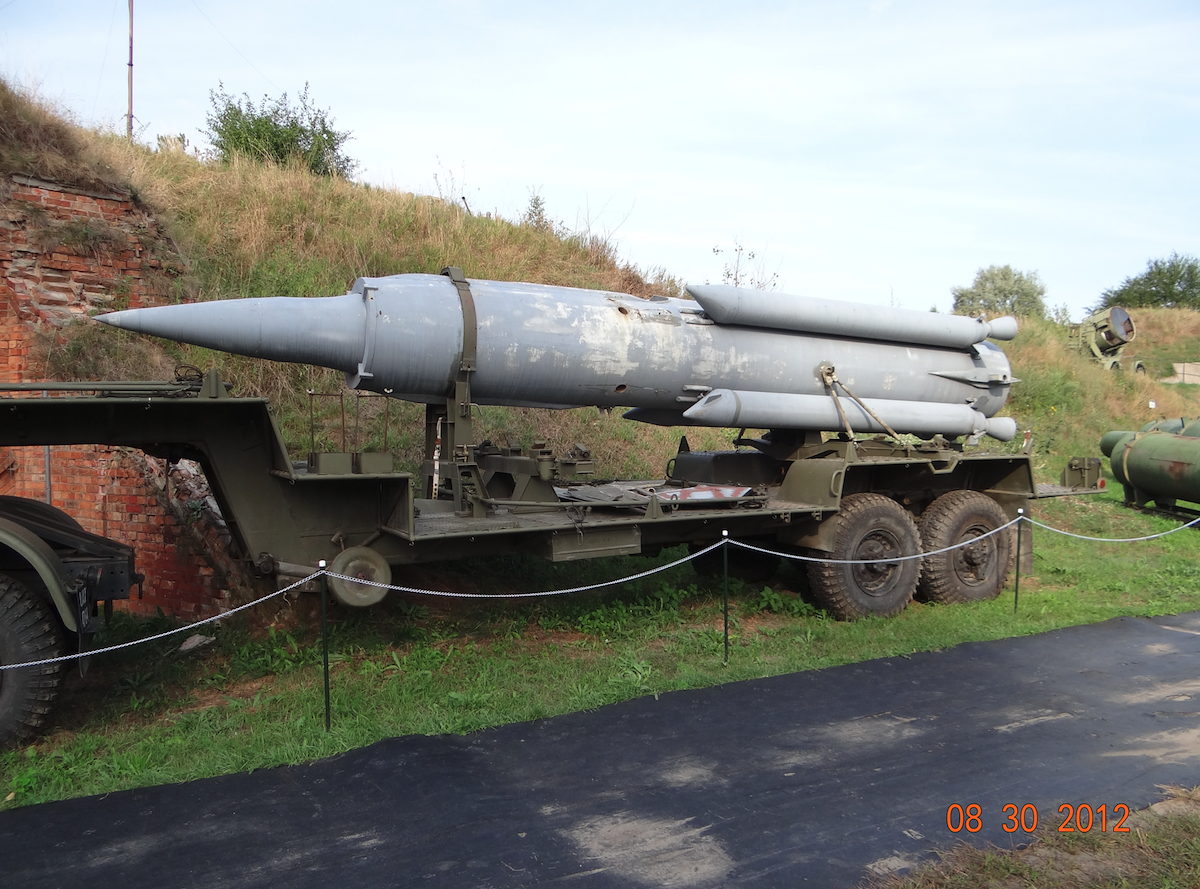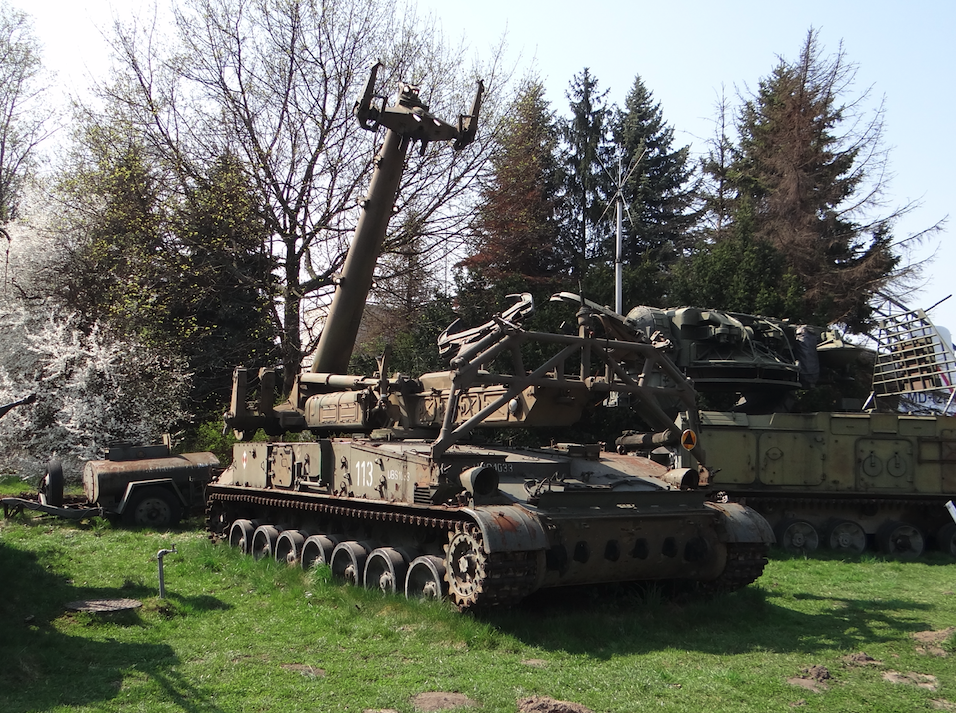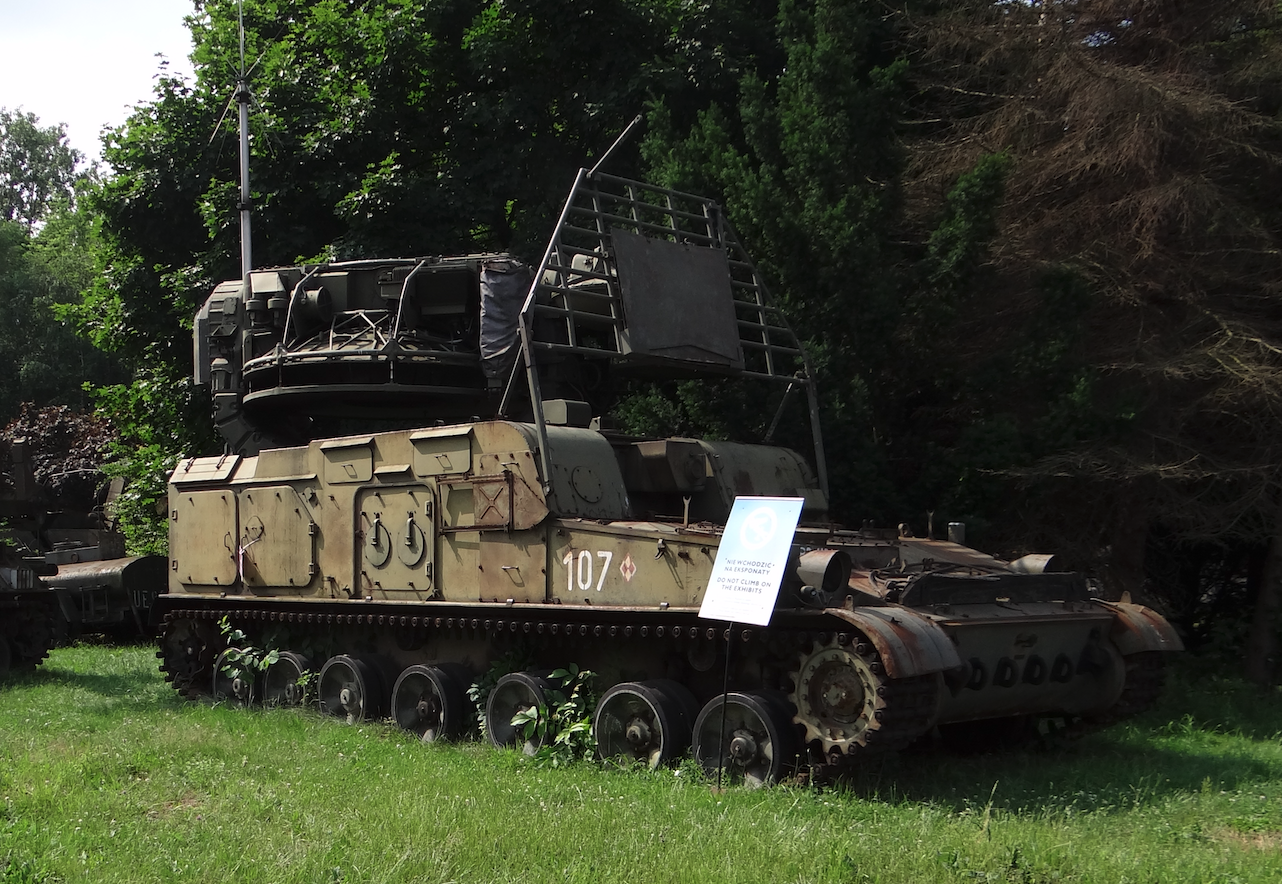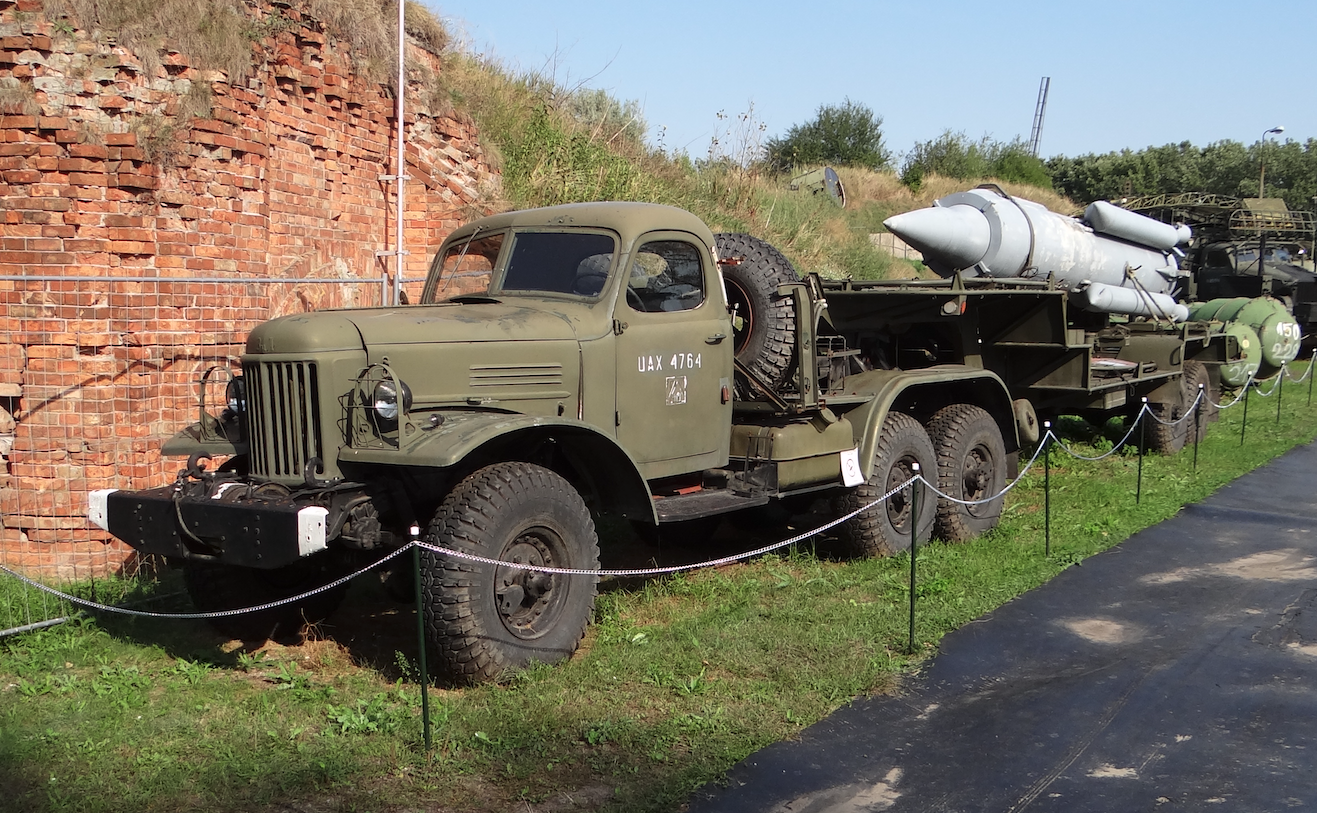Kraków 2020-09-25
2K11 Krug anti-aircraft missile system

Description for the photo: The 3M8 missile has no control and support surfaces installed. The front surfaces are moved to guide the flying missile.
2K11 Krug.
The 2K11 Krug anti-aircraft missile system (NATO code SA-4 Ganef) was designed to intercept targets (aircraft and ballistic missiles) flying at speeds up to 600 m / s (2,160 km / h, 2 Ma). The assumptions of the program were to destroy targets at a ceiling from 3,000 m to 25,000 m, at distances of up to 45 km. Targets that cannot be destroyed by gun artillery. The probability of destroying a target, type Il-28 bomber, at altitudes of up to 15,000 m with one missile, was 80%. In addition, the target could perform dodges with overloads of up to 4 g. The active radar reflection area should be at least equal to that of the Mikoyan and Guriewicz MiG-15 fighter. Target detection distance 115 km minimum.
Design work began in 1958. Two design offices were commissioned to develop the missile. It was a kind of competition. The KS-40 rocket was selected, developed by the team of the Experimental Construction Bureau No. 8 in Sverdlovsk. The program included the team of the Experimental Design Bureau No. 2 of the State Committee for Aviation Technology, which proposed the W-757Kr missile with a solid fuel launch engine. In 1960, the system was designated 2K11M Krug. However, work on the W-757Kr missile was discontinued in 1963.
The new, completely rebuilt missile received the designation 3M8. Only in 1964, the set was adopted. The system was constantly modernized. Efforts were made to lower the lower boundary of the fire zone, and thus solve the problems of radar noise from the ground. It was possible to lower the lower limit of the fire zone from 3,000 m to 250 m. The upper fire zone reached the ceiling of 24,500 m. The number of air targets was gradually increased. In 1969, successful attempts were made to intercept ballistic missiles. There was an opportunity to equip troops with universal PZR, capable of destroying ballistic missiles with a range of up to 150 km. The 2K11 Krug family anti-aircraft missile systems did not participate in the armed conflicts. They were exported to: Bulgaria, Czechoslovakia, Hungary, East Germany, Syria and Poland.
Basic elements of the PZR 2K11 Krug system.
Self-propelled, tracked transporter-launcher 2P24 (GM-123 Vehicle). 1S32 mobile command station with a fire control system. The system includes the Radar Initial Search Station 1S12. It was a P-40 Agata radar, with a tracked chassis, working in the centimeter wave range. Transport truck 2T6 (Ził-151 car).

Description to the photo: The first photo shows a 2P24 transporter-launcher with two 3M8 missiles. The second photo shows the 1S32 mobile command station with radar antennas.



The 2K11 Krug system in Poland.
In 1976, the Polish Army adopted the 2K11M1 Krug anti-aircraft missile system to the 61st Artillery Brigade of the Air Defense Forces in Skwierzyna. It was the only unit in Poland using the PZR 2K11 Krug. The training for new equipment took place in Kiev. On August 10, 1978, the brigade made its first combat shooting at the CCCP training ground. In 1995, for the first time in the country, combat shootings took place at the training ground in Ustka. In the years 1999-2000, WZU-2 Grudziądz developed a project to modernize the 1S32M1 / M2 missile guidance station. As part of major repairs carried out in 2000-2005, six missile guidance stations were modernized. The Krug system was used until 2011, when the military unit was disbanded.
Operation of the 2K11 Krug system.
The basic set has two 3M8 missiles, mounted on a self-propelled 2P24 tracked launcher, the GM-123 vehicle. The launcher rotates 360 degrees on the vehicle and can be raised to an angle of 70 degrees.
The 1S32 rocket guidance station was placed on the GM-123 (426-124) vehicle chassis (the same as the rocket launcher chassis). The radar works in the centimeter range. The station made it possible to detect a fighter plane from a distance of up to 180 km, with a flight altitude of 12,000 m.
3M8 missile.
The 3M8 missile has a two-stage system. The first stage of the rocket consists of four 3C5M1 starter engines, 3.63 m long, with a load of 4L11 solid fuel, weighing 173 kg. After take-off, the rocket starts a slow rotation along the longitudinal axis, about 2 seconds / revolution. After the fuel in the launch rockets is burnt out, the rockets fall off the missile. The jet, marching engine starts working, accelerating the projectile to supersonic speed. The fuel is aviation kerosene. The main marching jet engine with an annular combustion chamber, marked ZC4. In the forward compartment of the missile there was a 3N11 combat charge, weighing 150 kg. The explosion produces 5,000 fragments weighing 7-8 grams. The modernized projectile produces 15,000 fragments, weighing 4 grams. The explosion was initiated by the 3E26 radio fuse. A spherical compressed air tank is located behind the warhead. This air is used to move the front control surfaces and thus guide the missile.
3M8 self-propelled rocket launcher.
Self-propelled 3M8 rocket launcher, carries and fires two missiles. The GM-123 vehicle runs on tracks. The drive is a V-59 engine, which is a V-12, liquid-cooled diesel, 520 HP. The fuel tank holds 850 liters of diesel fuel. The maximum speed of the vehicle is 35 km / h. The total weight of the set is 28,200 kg. The crew consists of 3-5 soldiers.
Rocket Guidance Station 1S32.
Coherent-impulse radar station in the centimeter range. The antenna system is a fairly complex rotating structure with several dish antennas, the largest element of which was the target channel antenna. On the left side of it there is an antenna of a narrow beam of the rocket channel, above which antennas of a wide beam of the rocket channel and a radio command transmitter for the rocket are located. In the upper part of the antenna column there is a TV-optical viewfinder camera.
3M8 missile T-T data:
Length 7.84 m
Span 2.70 m
The diameter of the compartment with the warhead, electronics and air tank is 0.45 m
The diameter of the missile is 0.85 m
Take-off weight 2 453 kg
Main step weight 1,400 kg
The weight of the warhead 150 kg
Proximity fuse and additional self-destruction system
Top speed from 2,880 km / h to 4,000 km / h
Range from 6,000 m to 50,000 m
Opracował Karol Placha Hetman
